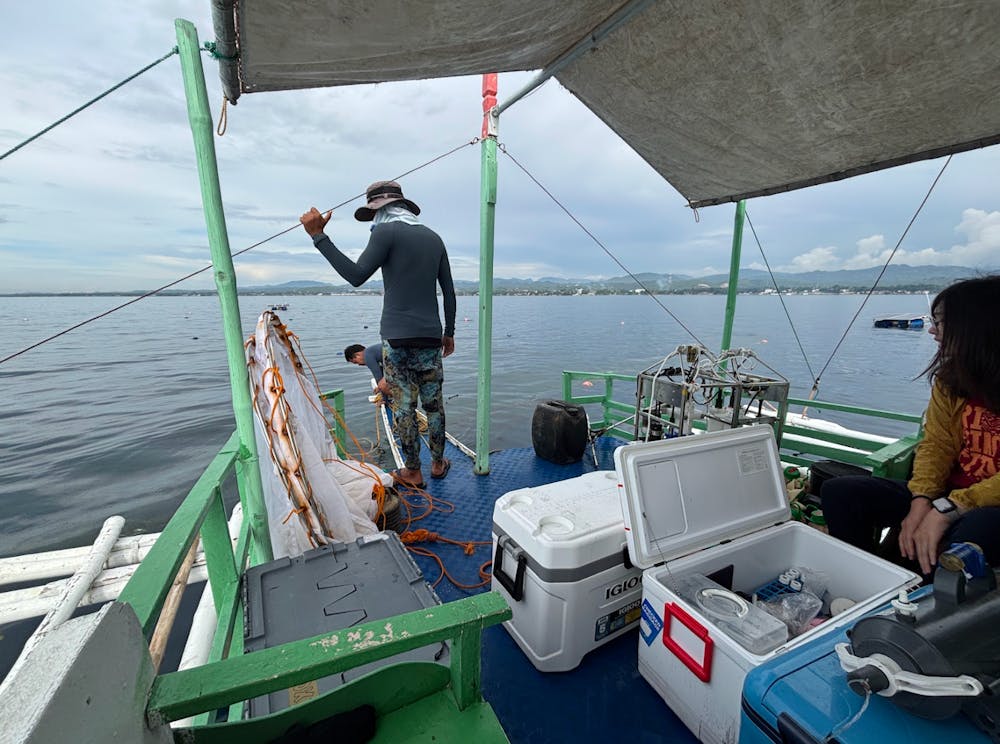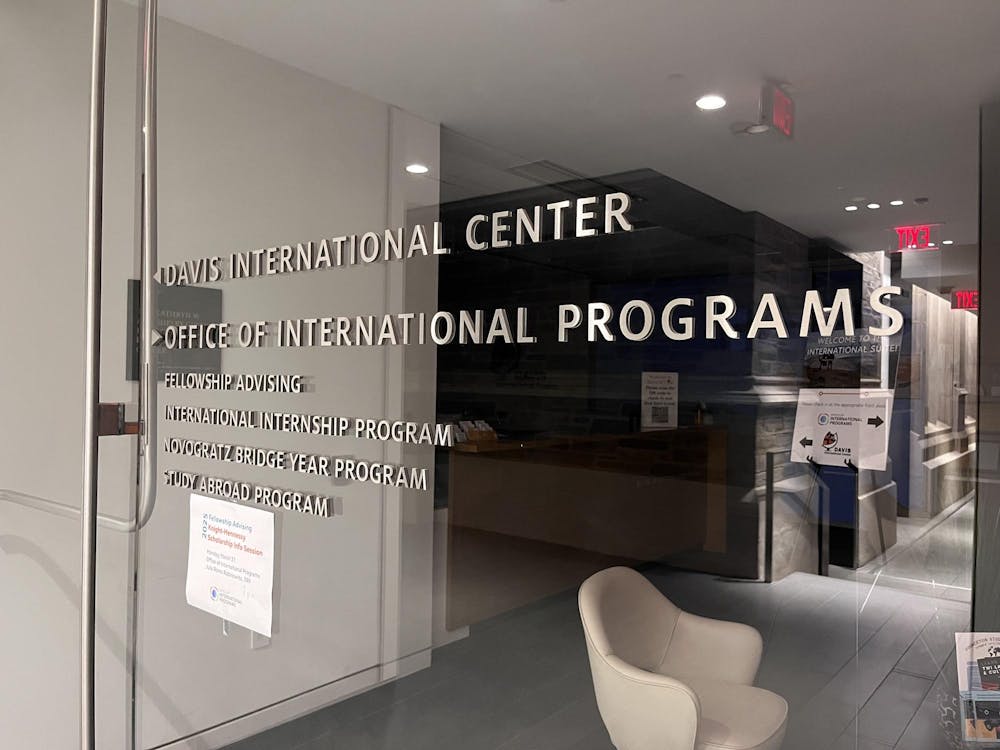From Alaska to the Philippines, 104 Princeton students engaged in cutting-edge research for the High Meadows Environmental Institute (HMEI) over the summer. Their work was part of the Environmental Internship Program and included researching extreme weather, water and the environment, biodiversity and conservation, oceans and atmosphere, environmental policy, and a new energy future.
Students presented their summer work at the HMEI Summer of Learning Symposium on Friday, Sept. 12.
“It’s all real research,” Gabe Vecchi, Director of HMEI, told The Daily Princetonian. “We’re able to take some chances and explore new directions with some really high-skilled students.”
One group of HMEI interns traveled on a research vessel to the mid-Atlantic to sample seawater. Darren McKeogh ’28, who served in the U.S. Navy for four years before attending Princeton, sampled seawater to study a bacterial gene that converts nitrous oxide to nitrogen gas.
“I was able to develop a lot of laboratory skills and research experience, which freshmen typically are not able to get on their first summer,” McKeogh said.
Jessica Curran ’28 researched seaweed and its role in climate mitigation and carbon sequestration in the Philippines and Taiwan. In the Philippines, Curran conducted research on a seaweed farm, where her team took samples of seaweed to measure how it affected the ocean’s biochemical processes. The internship was “absolutely perfect” for Curran, who studied seaweed in high school but had little travel experience.
McKenna Crocker ’28 spent the first ten weeks of her summer at the Rocky Mountain Biological Laboratory (RMBL), researching plant-pathogen relationships and how they changed at various altitudes. After her internship concluded, she joined an Engineers Without Borders trip, organized and supported by HMEI, to install water infrasture in Kenya.
While Crocker did not have a background in biology before the internship, the experience she now wants to focus on is agricultural research. Her time in Kenya also helped her realize the importance of projects “helping people and giving back to communities.”

Some participants remained on campus. Julianne Somar ’26, an architecture major, researched how wood bends itself and how to implement those findings when creating biodegradable structures.
Somar and her peers made a prototype of a fully biodegradable wooden structure now residing in the Forbes Garden.
“As an architecture student, I don’t often have the chance to design something and then have it fully realized. So this was a really wonderful opportunity to get to do that,” Somar said.
Collin Guedel ’26 researched how microbes in soil influence global hydrogen budgets. He shared with the ‘Prince’ that he believes there will be an increasing amount of hydrogen under the current hydrogen-based fuel economy.

Students are not the only ones benefiting from the program. Mechanical and Aerospace Engineering professor Michelle DiBenedetto said her HMEI interns designed a new lab setup and worked on a robotic microplastics collector.
“[This program] allows us as a research community to dream big,” Samuel Eastman, a postdoc in the Chemical and Biological Engineering department who has supervised multiple HMEI interns over the years, said. “I also like having them in the lab because of their fresh perspectives, and I like their enthusiasm.”
Many program participants cited the experience as potentially influential for their future independent work. Guedel, for instance, plans to continue his soil research for his thesis.
The program offers interesting, potentially transformative experiences for any student, internship participants shared. Somar said, “Summers on campus aren’t as bad as they seem.”
Suthi Navaratnam-Tomayko is the accessibility director and a Features contributor for the ‘Prince.’
Please send any corrections to corrections[at]dailyprincetonian.com.








